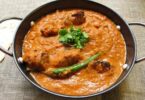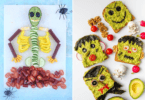Gaining a competitive advantage for anyone is more than just getting involved with a fad diet and adding a few supplements to pre-competition meals, see my previous blogs: https://valeriegoldstein.wordpress.com/2015/11/12/optimize-nutrition-for-kids-sports/, https://valeriegoldstein.wordpress.com/2015/11/02/fuel-active-kids-with-nutrition-not-just-food/.
Almost thirty million kids participate in some form of team sport, http://espn.go.com/espn/story/_/id/9469252/hidden-demographics-youth-sports-espn-magazine. As an athlete, parent or coach a well rounded nutrition strategy should take into account: bone growth, minimizing muscle wear and tear while maximizing strength, flexibility and promoting all around good health.
According to A. Collins et al. (10.4236/health.2012.410133), athlete or not , kids are not eating right. “Nutritional intake may jeopardize optimal athletic performance and place children at risk for future chronic diseases, including osteoporosis.”
Eating to achieve can expand across sports to academics and into successful friendships. And it cannot be denied, family time centered around eating and playing together is good for everyone!
3 Critical Elements for attaining a Competitive Edge
- Protein with all meals and snacks will help keep appetite stable, help repair muscle tissue after workouts and provides better absorption of certain micronutrients like iron, zinc, copper and B vitamins. Real whole food sources of protein at 1 g protein/pound of body weight and about 3 oz. protein about 30-45 minutes after practice to refuel.
2. Micronutrients typically found in nuts/seeds, vegetables, and fruits are just as important as macronutrients when considering optimal nutrition. They do not provide energy directly but help assist the body in creating energy, growth, building muscle and bones and much more.
The Linus Pauling Institute lists important general micronutrient requirements for children, http://lpi.oregonstate.edu/mic/life-stages/children.
3. Salt is lost in sweat and is critical for fluid balance so replenish it by adding Himalayan sea salt to water or foods. Avoid beverages containing sugar (like Gatorade), caffeine and carbonated drinks to avoid dehydration. Click on the links to my previous blogs above for specific water recommendations.
Build meals with lots of color and remember with variety comes an abundance of nutrients. Eating the same thing daily even if it is healthy only provides the same nutrients every day is not optimal and will not to replace needed nutrients.
An assortment of kid friendly sample meals and snacks that taste good while helping to maximize nutritional intake and sports performance should include all of the above, try these:
Breakfast (2-4 oz. protein)
- Eggs(or hard boiled eggs) with spinach broccoli and cheese
- Peanut butter in celery or banana boats
- Whey or pea protein shake with added fresh fruit
- Cottage cheese or plain Greek yogurt with fresh or frozen fruit
- Oatmeal pancakes made with protein powder or topped with peanut butter
- French toast sprinkled with cinnamon and turkey franks
Visit these sites for more breakfast or snack options:
7. Cinnamon Churritos: https://www.atkins.com/recipes/cinnamon-churritos/210
8. Canadian Bacon, Cheddar and Tomato Stacks: https://www.atkins.com/recipes/canadian-bacon-cheddar-and-tomato-stacks/723
9. White Chocolate Almond Protein Drink: http://www.ketogenic-diet-resource.com/protein-shake-recipes.html
Lunch/Dinner (average 6-8oz of protein based on body weight)
- Cheese/hamburger or hot dogs (1/2 bun)
- pork
- chicken
- steak
- tuna or any fish
Natural meat from grass-fed livestock has higher omega 3 and does not contain excess hormones and antibiotics.
Animal sources of protein, especially red meat provides quality protein, easily absorbable iron (especially important for teen girls), niacin, vitamin B12, zinc and selenium.
Sizes (4-6 1/2 cup servings as part of meals and snacks)
- Broccoli
- cucumbers
- celery sticks and carrots
- sweet potato baked or cut up as sweet potato fries
- wild rice
- pickles
- peppers
- veggie stir fry
* add a little guacamole to almost any side
These sides provide: vitamins A, C, E , K, B vitamins, Riboflavin, Calcium, Iron, Magnesium, Phosphorus, Selenium, Fiber, Folate, Potassium, Manganese, Copper, Potassium, vitamins A, B6, C, Fiber
Snacks
cheese sticks or snack packs
homemade trail mix (Lindt 85% chocolate, almonds, shredded coconut, sunflower/chia/pumpkin seeds)
turkey, roast beef, ham roll up (any veggie or cheese)
crackers and peanut butter
If eating right seems impossible speak with your pediatrician about supplements with the GMP seal (there are other brands that are reputable too). My advice:
- Multivitamin
- Omega 3
- A green drink (with sea vegetables) such as Greens plus (http://www.vitacost.com/greens-plus-advanced-multi-superfood-vanilla-chai) and/or a homemade veggie smoothie
- A calcium (bone health) supplement including boron*, vitamin D and K2, magnesium, silicon
*Boron is important for its role in building strong bones and muscles, improving thinking skills and muscle coordination. Natural food sources include chickpeas, almonds, beans, vegetables, walnuts, avocado, broccoli, oranges, apples and pears.
Want The edge? Individual nutrition care plans with broad spectrum nutrients will get you there. For active kids, all the pieces of the nutrition puzzle must fit together. If one piece of the puzzle is missing (it can lead to dehydration, blood sugar imbalance, vitamin/mineral deficiency, injury…) the picture is not complete. There is no competitive edge.






